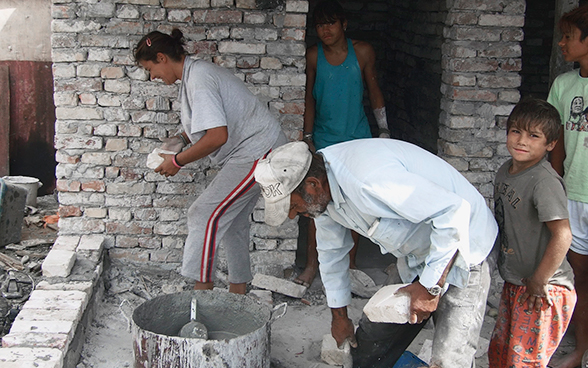Around half a million Roma live in Serbia, mostly in their own settlements, which are often on the periphery of cities. The northern region of Vojvodina has the highest number of Roma as a percentage of the population. At the end of the 1990s the region became a gathering place for thousands of refugees belonging to this ethnic minority who were fleeing the war in Kosovo.
Many Roma live close to the poverty line in precarious conditions – living in cramped conditions in settlements with poor roads and inadequate electricity and water supplies. Many of them are unemployed or are only able to obtain casual work, and they often can barely afford to feed their families.
In an effort to alleviate these poor living conditions, the SDC and the Federal Office for Migration (FOM) contributed for the period 2008–2012 to a project run by Swiss Interchurch Aid (HEKS) and the Ecumenical Humanitarian Organisation (EHO) aimed at achieving the socio-economic integration of Roma in Vojvodina. Around 23,000 Roma are beneficiaries of this project, which has now been extended to other regions of Serbia. The project focuses on the following:
- Better living conditions through the "dweller-driven model"
The dweller-driven model is a participatory approach developed by HEKS and the EHO, whereby Roma communities take part in the renovation of their dwellings. They are included in decision-making processes and can bring their own needs to the table. The model has gained wide recognition and is enshrined in Serbia's national Roma strategy of 2009. The UN-Habitat agency, which promotes socially and environmentally sustainable towns and cities, has included the dweller-driven model in its handbook on recommended practice for sustainable human settlements. - Education
Children and young people receive learning support so as to meet the level required for the public education system. - Employment and income
Young Roma take part in education programmes to improve their chances in the job market or pave the way to self-employment. - Information and advice
Roma receive support to be able to avail themselves of their rights within the health-care system and to make appropriate use of other public services. This often means they must first obtain the requisite personal documents. - Safeguarding rights
Roma receive assistance in understanding their rights and using them. Increasingly they should become a more important part of the country's socio-economic development.
The results of the project are clear for all to see: in 13 Roma settlements the shared infrastructure such as roads and electricity and water supply has been restored. Five hundred houses have been renovated. More than 600 children have received support with admission to preschool or school, resulting in a fall in the number of children dropping out of the education system prematurely. More than 200 Roma have attended vocational education and training courses. A proportion of those who participated have since increased their income.

